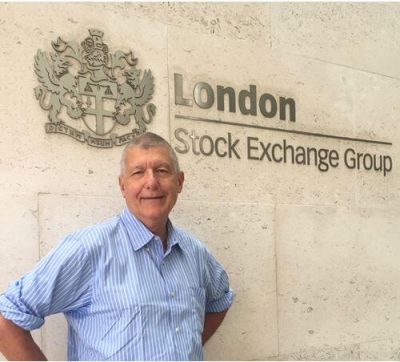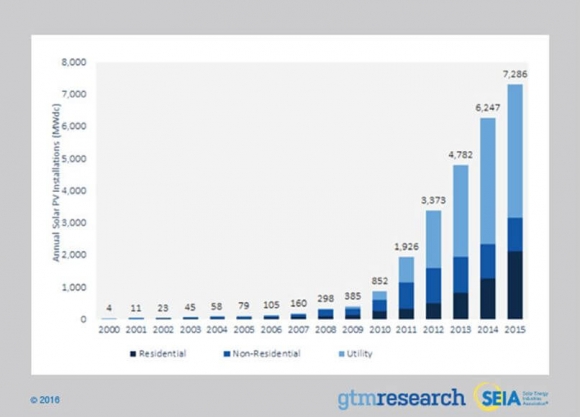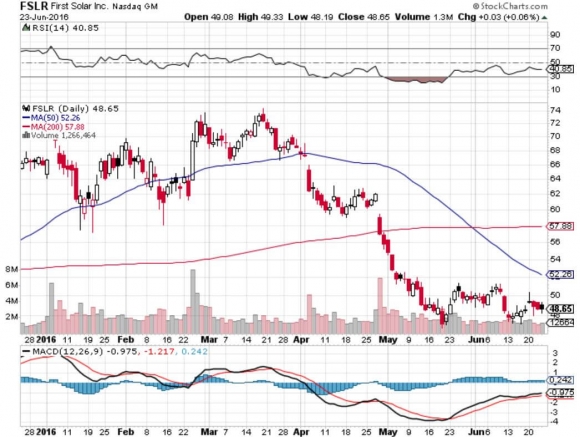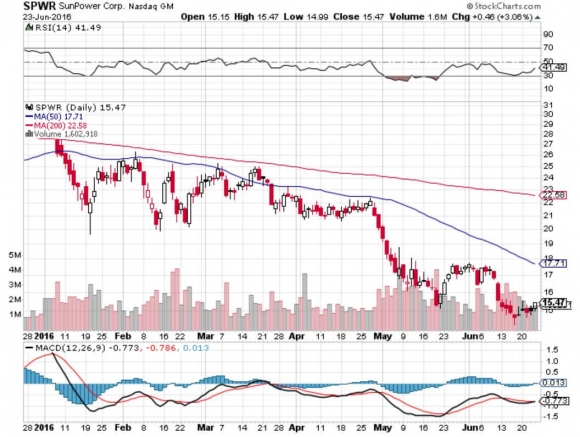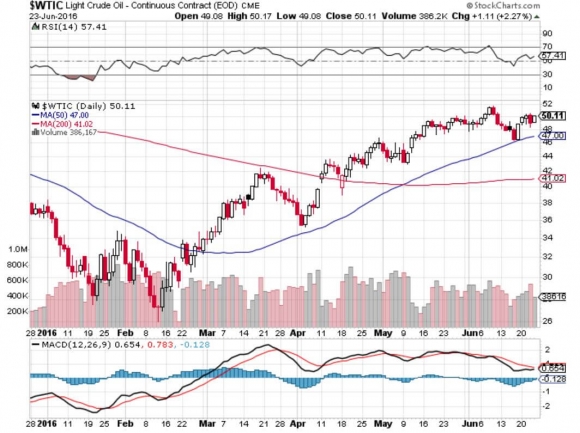From Your Correspondent in London
The evening started out so hopefully.
My old employer, the British Broadcasting Corporation, projected in bright lights, a running referendum tally on the side of the building in giant ten-foot tall numbers.
When we went to bed, early results from the cities were showing a 52% to 48% margin in favor of keeping Britain inside the European Community.
When I awoke the next morning, I turned on the TV to find British Prime Minister David Cameron resigning, the government in disarray, and Britain out of the EC by a 51.9% to 48.1% vote.
The pound had crashed from $1.50 to $1.30.
Everyone in the government that I?d spent the week advising on the dangers of an exit vote, was suddenly out of a job!
What?s to follow?
The dismemberment of the United Kingdom, the collapse of the European Community, another Great Depression, and perhaps WWIII.
The big winners? A newly reviving Russia that is watching the alliance on its border crumble, and perhaps Ireland, the new HQ for multinationals seeking an English speaking base inside Europe.
As for the US, it now has a handful of weak allies instead of one strong one. Our growth will slow, as it will be around the world.
Any chance of a Federal Reserve interest rate hike this year has been obliterated. My friend, Janet Yellen, can go back to sleep for another year.
Absolutely no one saw this coming. Even London?s notoriously canny bookies missed it by a mile, losing some 150 million pounds on ?remain? bets gone awry.
The bigger problem is that the largest hedge funds were caught totally wrong footed by the result, expecting a ?remain? vote to lead a global ?RISK ON? rally that would take stocks and sterling to new 2016 highs.
Their awkward positioning is triggering enormous stop loss selling that will no doubt spill into the week ahead.
District by district analysis spoke volumes about the state of class and wealth fractiousness in the UK.
Americans take note.
The blue-collar union workers won at the expense of the white-collar middle class.
A manufacturing minority won at the expense of services majority.
The old won at the expense of the young.
The uneducated won at the expense of the educated.
The emotional and ideologically driven won at the expense of the numeric and the rational.
Call it the referendum devoid of the thought process.
It was all a rare opportunity for computer illiterate, angry old white men to thumb their nose at the one percent.
The ?exit? leadership, led by London former mayor, Boris Johnson, has absolutely no plan for going forward.
Fear of immigration was the principal reason why so many voted to depart from Europe.
Literally thousands of Middle Eastern refugees are camping on the French end of the Channel Tunnel, desperately seeking a safe haven and jobs in the UK through any means possible.
The government has agreed to take 80,000, spawning fears of Islamic terrorism. Even though all of the domestic terrorist incidents that have occurred so far, have been committed by British born citizens recruited by ISIS online.
Speaking to dozens of ?exit? voters in pubs, restaurants, and on trains, it was clear that a promised increase in government benefits and subsidies was a major driving factor. Much was said about unelected elites.
The reality is that those benefits will get slashed as government tax revenues implode.
Many complained about falling real wages and standards of living. But these are the results of hyper accelerating technology and globalization (competition from China), not EC membership.
If anything, EC membership buffered these negative influences.
And here is the problem.
I remember what England was like before it joined the EC in 1973. It was a poor, strike prone, mildewing country with lagging technology and a per capita income a quarter that of the US.
But most British voters are too young to remember that.
Today, standards of living are amazingly on parity with those of the US, thanks to a four-decade boost produced by the benefits of being within Europe.
The detrimental effects of the vote are almost too far reaching to imagine.
London cranes are about to become an endangered species as real estate prices crash. Residences and office space there are no longer the well-organized entry point for Europe.
A market size that has just shrunk from 520 million to 50 million requires considerably less office space than it has now.
And the one million Poles who were brought in to build them? They will be sent back, ending $1.5 billion a year in remittances to their home country. Poland will suffer.
I could go on and on.
It was a classic case of failure having many fathers.
Certainly the Tory government did a poor job making their case to stay. Too much focus was placed on the immediate multi billion pound cost of membership, and not the tenfold increases in indirect benefits.
When all those newly minted foreigners go, they will take their money and their spending with them.
The US also deserves its fair share of blame here, which inadvertently unleashed a cornucopia of unintended consequences.
When it invaded Iraq in 2002 based on faulty, cherry picked intelligence, it destroyed Iran?s largest enemy and created its largest ally.
That emboldened Iran to keep the Syrian civil war going five years longer than it should have, unleashing one million refugees on a defenseless Europe with porous borders.
This revived the ugly face of nationalism, racism, and nativism, at the expense of globalization. Social services groaned from the weight.
We are all now paying the price.
Other disaffected Europeans have read the writing on the wall and may follow with their own ?Dexit?, ?Frexit?, and ?Nexit?.
Scotland, which voted heavily to remain in the EC, is already moving for another referendum of its own to go independent.
So did Northern Ireland, which is now eyeing reunification with the South.
The United Kingdom will be cast into the dustbin of history.
The European Community will disintegrate into the same passel of squabbling nations that brought us World Wars I and II, except that this time, the Germans have nuclear weapons.
Vladimir Putin will take great joy playing one off against the other.
It?s just a matter of time before Europe gets its own Donald Trump. The last time that happened, his name was Adolph Hitler.
The weekend after the vote, it was as if the nation woke up from a wild party with a giant hangover and asked ?Oh my gosh, did I really do that last night??
The search for a morning after pill is on.
I would bet big money that if the vote were held again today, ?remain? would win by a decided margin. It would require a swing of only 1.9% of the vote to do so.
Fortunately, there are ways out of this for the UK, and the rest of us.
National elections in two months could produce a strongly pro Europe British government that will devise ways to negate the vote and get back into the continental association.
Every business in the country is waking up Monday morning to massive order cancellations across the board.
UNCERTAINTY is epidemic, and when that happens, business decisions everywhere are put on hold, bringing the economy to a screeching, juddering halt.
Good luck getting it restarted.
A sharp recession is already upon the UK, although i
t may take three months for the numbers to reflect it.
Sterling will certainly become the next currency to post negative interest rates, putting it into free fall. It should eventually drop to parity against the US dollar, back where it was in 1985.
The inflation that the Bank of England had been seeking will arrive in spades. Import prices just jumped 12%.
Yes, you could make an argument that a bargain basement currency is positive for British manufacturing. But most of that decamped for China years ago.
It could well be that England gets sick of three years of nonstop recession, and separatist leaders making lame, whiny, and nonsensical excuses all the way, then votes to rejoin the EC.
That is, if the Europeans will take them back. And at what price?
Fortunately, US financial assets are looking pretty good in all of this mayhem.
Higher yields will attract a safe haven bid, first for bonds, and then stocks. The greenback (UUP) will reign supreme, except against the Japanese yen, where ?RISK ON? unwinds will drive it higher.
The ten-year Treasury yield could crater to 1%, taking the United States Treasury Bond Fund (TLT) up to a stratospheric $150.
The S&P 500 could widen out from a 5% to a 14% trading range going into the US presidential election.
Use any visits to the $1,812 level to load up on high earners like biotech (IBB), cyber security (PANW), big tech (MSFT), (FB), and junk bonds (JNK).
At $1,812 the (SPY) will tempt you with a dividend yield of 2.75%, the highest anywhere.
US presidential aspirant Donald Trump, who was visiting the UK this week, said, ?The British got their country back?.
The Donald may also be well on the way towards his fifth bankruptcy. The value of his $600 million investment in Scotland shed $70 million in value overnight. Demand for luxury condos and exclusive golf memberships just vaporized.
It?s probably the only positive result of this referendum.
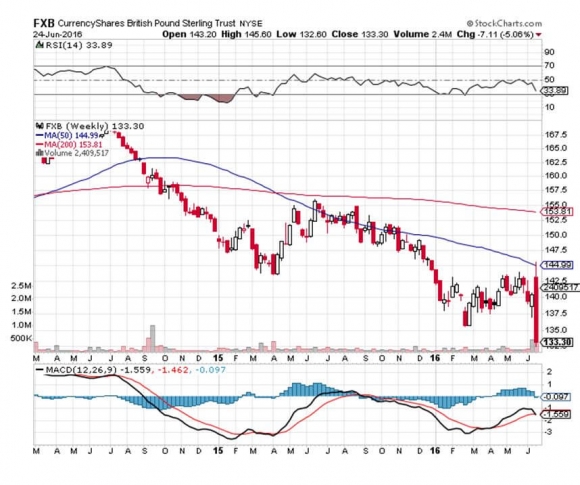
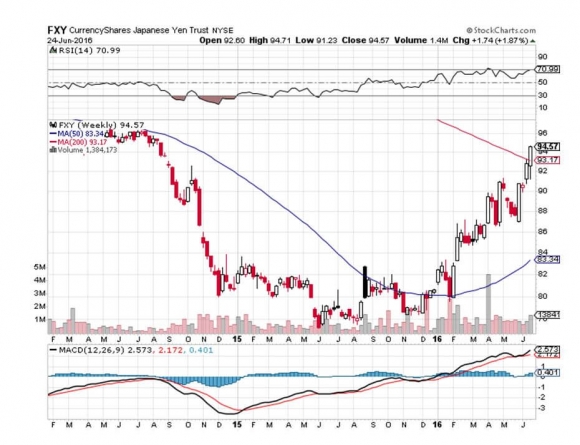
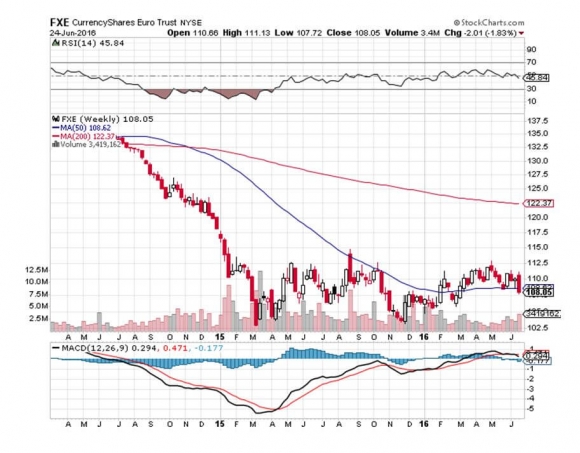
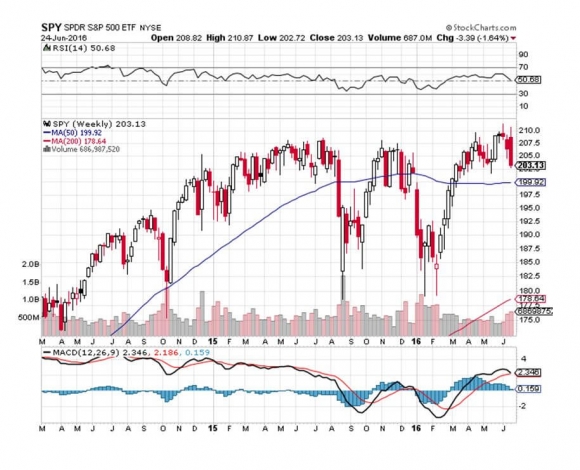
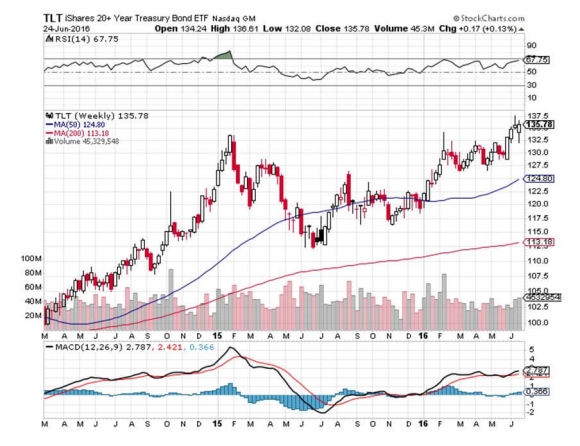


The London Cranes Are the Next Endangered Species
